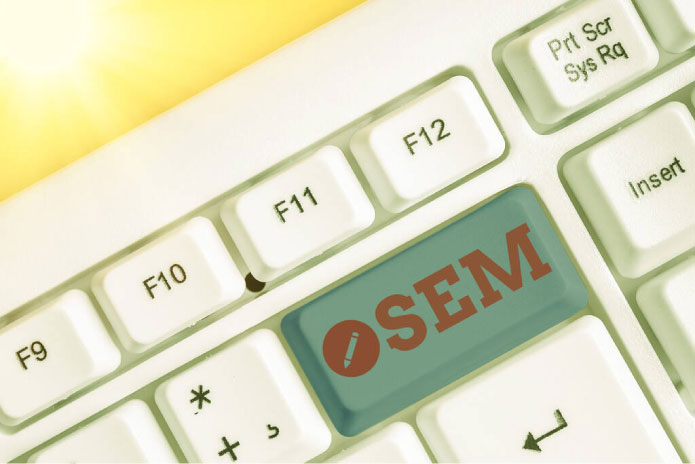The digital advertising market in Brazil continues to expand strongly. According to the most recent Digital AdSpend 2025 , conducted by IAB Brasil in partnership with Kantar Ibope Media, investments in digital media reached R$ 37.9 billion in 2024 , an 8% compared to the previous year and a 60% increase since 2020 .
Social media remains the primary destination for investments, accounting for 53% of the total , followed by search engine advertising (28%) and portals (19%). The retail sector led the investment with almost 20% of the total, followed by consumer services (10.9%) and electronics/IT (6.7%).
Another indicator of transformation in the digital ecosystem was the arrival of TikTok Shop in Brazil in May 2025. This new feature allows for purchases integrated with videos on the platform and has already gathered around a thousand sellers in the country since its launch. Analysts estimate that TikTok Shop could reach between 5% and 9% of Brazilian e-commerce by 2028 , with a sales volume between R$ 25 and R$ 39 billion .
This combination of investment growth and platform revolution makes the digital environment highly competitive. In this context, Rafael Magdalena, director of US Media Performance, listed 8 essential tips — 4 for advertisers and 4 for agencies — to navigate more efficiently and generate real impact in the digital world.
For advertisers
1) Smart Budget
Defining the ideal budget involves having an attribution model tailored to the advertiser's reality, considering different methods such as last-click , multi-touch , and marketing mix modeling —attribution models used to understand the impact of channels on conversion. This will allow for understanding the saturation point and the representativeness of each channel, as well as opening up space for experimentation. The synergy between awareness and performance strategies should also be considered to maximize ROI and avoid distortions in the analysis.
2) Engaging video
Creating effective videos depends on the suitability of the format, message, and dynamics to the audience and the platform. “Videos on social media have a different consumption behavior than formats like pre-roll or mid-roll , requiring specific scripts for content with or without a skip option. There's no magic formula: long or short videos can have varying performances, and success depends on strategy, channel, and experimentation,” says Magdalena.
3) Effective measurement
The metric should reflect the company's main objective. For brand awareness, CAC (customer acquisition cost), ROI (return on investment), and ROAS (return on ad spend) are not the most suitable. For sales, however, CAC per channel and ROAS are daily priorities. Incremental metrics are important for testing and experimentation, but require well-defined attribution models to avoid distorted results, since a channel can impact performance even without generating a direct conversion (last click).
4) Multichannel integration
Unifying the experience is a major challenge that must begin with the advertiser; without it, the journey will hardly be fluid. The use of ROX (return on experience) — more holistic than ROI (return on investment) — allows for the evaluation of multichannel impact (online, physical, customer service, financial), helping to retain customers, increase revenue, and reduce CAC (customer acquisition cost). It's no use having an award-winning campaign if the experience is poor and churn (customer loss) is high.
For agencies
1) Differentiation in the market
Standing out requires aligning the company's value proposition with the specific needs of the client. "It's necessary to find a balance between specialization and a broad range of services, relying on consultancies, partners, and bureaus to complement the delivery and avoid limitations in specific challenges," adds the expert.
2) Data and competitive intelligence
With artificial intelligence facilitating automation, compiling data and monitoring the competition (clipping, IR – institutional relations) has become more agile; however, it is necessary to have a team that knows the business and the market. A BI (business intelligence) team with technical expertise is not enough; an understanding of the client and the context is also essential.
Data and competitive intelligence must be integrated across all areas—media, planning, and creative—since these fronts directly impact results. The use of A/B testing, neuroscience, and AI to optimize creative work is increasingly common, and media professionals need to reclaim their analytical role to avoid biased planning.
3) Creativity and innovation in video
Investing in high technology is pointless if the audience or the medium can't handle it. Often, less is more. Immersive or interactive solutions can generate greater retention in experiences like in-gaming, while pre-rolls and mid-rolls require a focus on capturing attention without exaggeration, so as not to seem forced. The audience is more skeptical, and excess can drive people away instead of engaging them.
4) Strategic partnerships
Strategic partnerships are even more important today, given the complexity of the market and the diversity of channels and solutions. “Partners help to face challenges, regain audience attention, and choose the best channel for the message. Agencies must diversify, test new media, and avoid one-size-fits-all solutions, as clients will seek alternatives if the media plan is simplistic in a scenario where the creative and implementation process is increasingly automated,” concludes the director of US Media Performance.


